The Snowy Owl (Bubo scandiacus) stands as an iconic and charismatic species, captivating observers with its striking, all-white plumage and enigmatic presence in the Arctic tundra.
As the largest owl in the northern hemisphere, this majestic bird of prey embodies the beauty and resilience of the polar regions.
Renowned for its adaptability, the Snowy Owl ventures beyond its Arctic breeding grounds, embarking on extensive winter migrations in search of food.
With piercing yellow eyes, powerful talons, and silent flight, it is a formidable predator, preying on small mammals, birds, and even fish.
This diurnal hunter, celebrated for its unique behaviors and exceptional adaptations, occupies a significant ecological niche in the vast, snow-covered landscapes it calls home, offering a glimpse into the intricate wonders of Arctic ecosystems. Stay focused.
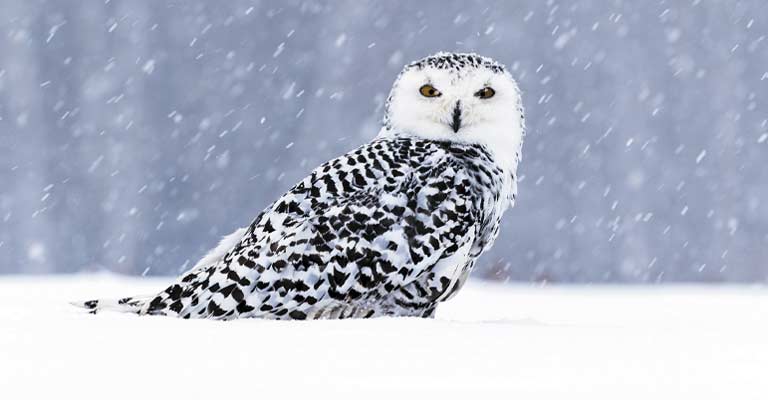
Identifying Characteristics of Snowy Owl
The Snowy Owl (Bubo scandiacus) is a magnificent and distinctive bird of prey, easily recognizable due to its striking appearance. Here are some of the key characteristics to help identify this majestic species:
Plumage
One of the most noticeable features of the Snowy Owl is its pristine, all-white plumage. Both males and females exhibit this snowy coloration, providing effective camouflage in their Arctic tundra habitat.
This white coat helps them blend seamlessly with their surroundings, making them less conspicuous to prey and potential threats.
Size and Shape
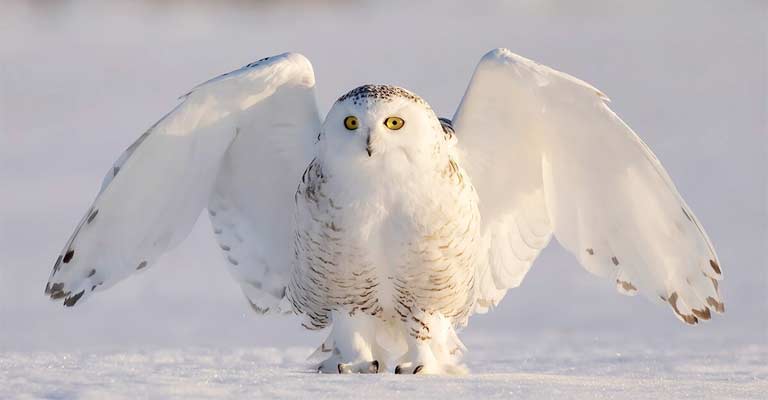
Snowy Owls are among the largest owl species, boasting a robust and substantial build. They have a wingspan that can reach up to five feet, giving them a powerful and imposing presence.
Their round faces, crowned by distinctive ear tufts, contribute to their iconic owl-like appearance.
Yellow Eyes
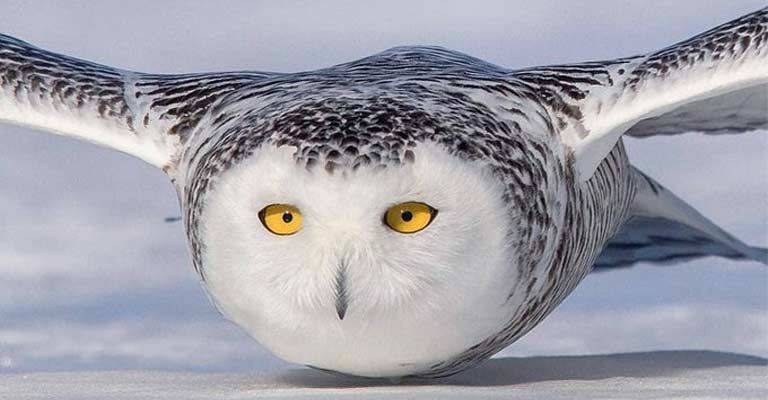
The Snowy Owl’s piercing yellow eyes are a prominent feature on its otherwise white face. These large, bright eyes are adapted for diurnal hunting, allowing them to spot prey from a considerable distance.
The contrast between the vivid yellow eyes and the snowy plumage enhances the bird’s captivating aesthetic.
Feathering on Feet
In addition to their snowy exterior, Snowy Owls have feathered legs and feet, a unique adaptation to their Arctic environment.
These feathers provide insulation against the cold and aid in navigating the snow-covered landscape. The feet are also covered in scales, helping the owl maintain a firm grip on prey.
Sexual Dimorphism
While both male and female Snowy Owls share the same snowy appearance, there is a subtle difference in their plumage.
Adult males typically exhibit more extensive white plumage, while females may display dark markings, particularly on their wings and back. This difference becomes more pronounced as the owls age.
Distinctive Call
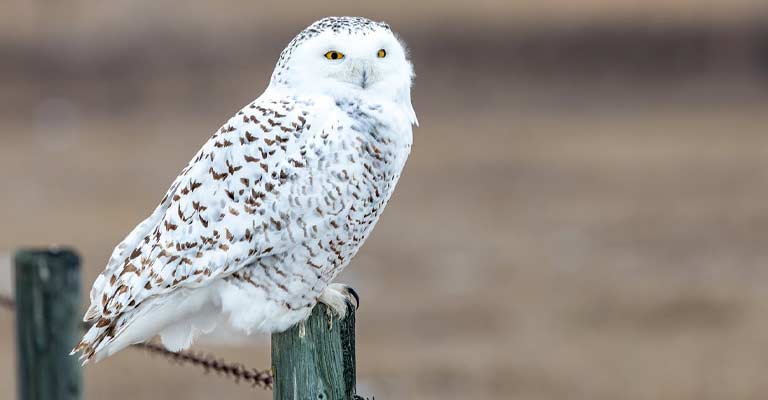
Snowy Owls produce a range of vocalizations, with their most recognizable call being a deep, guttural hooting sound.
The pitch and frequency of their calls can vary, serving various purposes such as communication between mates, territorial claims, or signaling danger.
Habitat
Snowy Owls are well-adapted to life in the Arctic tundra, where they breed and raise their young.
However, during winter migrations, they can be found in a broader range of habitats, including coastal areas, grasslands, and even airports. Spotting one in an unexpected location during the winter months is not uncommon.
Behavioral Traits
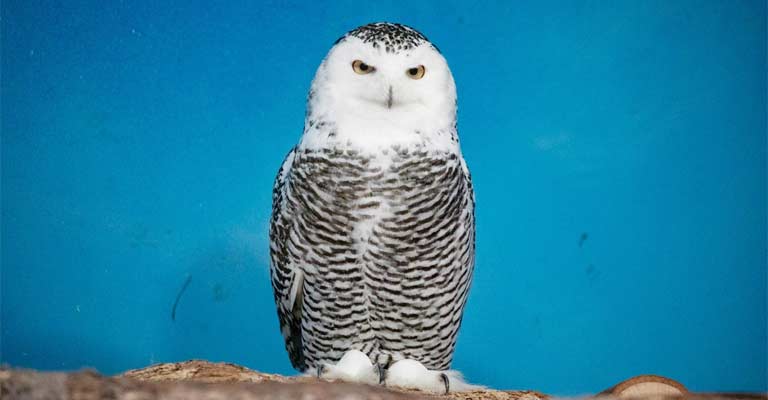
Snowy Owls are primarily diurnal hunters, meaning they are active during the day, especially in the continuous daylight of the Arctic summer.
They perch on elevated positions such as rocks or hillocks, patiently scanning the surroundings for potential prey. Their hunting prowess often includes capturing birds, small mammals, and even fish.
The Snowy Owl’s distinctive combination of size, coloration, facial features, feathering, vocalizations, and habitat preferences make it an easily identifiable and captivating species.
Whether soaring over the Arctic tundra or wintering in unexpected locations, the Snowy Owl stands out as a symbol of the wild and remote northern landscapes it calls home.
Taxonomy of Snowy Owl
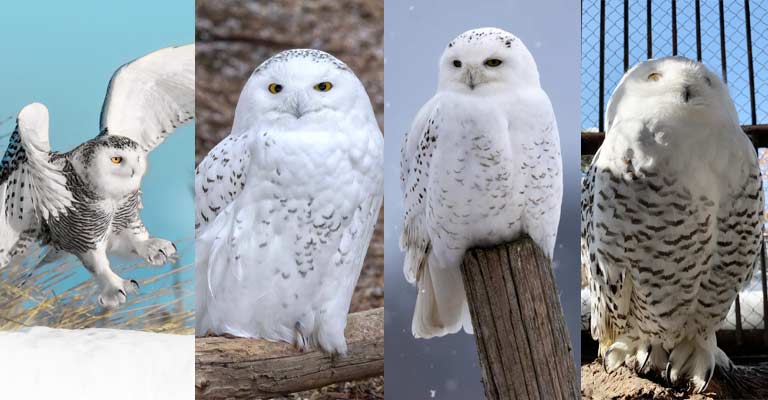
Here is a table summarizing the taxonomy details of the Snowy Owl:
| Taxonomic Level | Classification |
| Domain | Eukaryota |
| Kingdom | Animalia |
| Phylum | Chordata |
| Class | Aves |
| Order | Strigiformes |
| Family | Strigidae |
| Genus | Bubo |
| Species | B. scandiacus |
The Snowy Owl (Bubo scandiacus) belongs to the family Strigidae within the order Strigiformes.
Within the same species, various subspecies exist, reflecting regional adaptations. These may include variations in size, plumage coloration, and other subtle features.
The taxonomy of the Snowy Owl is intricately connected to its Arctic habitat and includes a diverse range of regional adaptations.
While the Snowy Owl’s classification remains consistent at the family and order levels, the nuances within its species reflect the bird’s ability to thrive in different environments across the Arctic regions of North America, Europe, and Asia.
Snowy Owl Life History
The Snowy Owl (Bubo scandiacus) is a charismatic and iconic bird of prey inhabiting the vast Arctic tundra and occasionally venturing into more temperate regions during winter migrations.
Renowned for its striking appearance, the life history of the Snowy Owl encompasses various aspects, from its dietary habits and preferred habitats to its breeding behavior, potential health threats, and ongoing conservation efforts.
Food
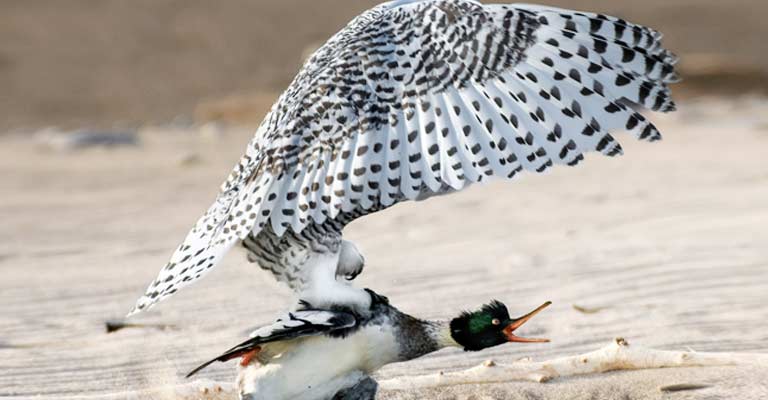
Snowy Owls are opportunistic hunters with a diverse diet. Their primary prey includes lemmings, voles, and other small mammals, which form the bulk of their diet, especially during the breeding season.
These skilled predators are also known to capture birds, ranging from ptarmigans to waterfowl, and occasionally fish.
Their powerful talons and sharp beaks make them effective hunters, ensuring a varied and adaptable diet to sustain their energy needs.
Habitat
The Snowy Owl is adapted to the extreme conditions of the Arctic tundra, where it nests and raises its young.
Their habitat preference includes expansive, open areas where they can utilize their keen eyesight to spot potential prey.
During winter migrations, they may be found in a broader range of habitats, such as coastal regions, grasslands, and even urban areas, displaying their adaptability to diverse environments.
Range Map
The Snowy Owl’s range is circumpolar, encircling the Arctic regions of North America, Europe, and Asia.
The breeding range is primarily in the Arctic tundra, with some populations migrating southward during the winter months.
Detailed range maps help researchers and conservationists understand their movements, crucial for effective conservation strategies and monitoring population trends.
Breeding
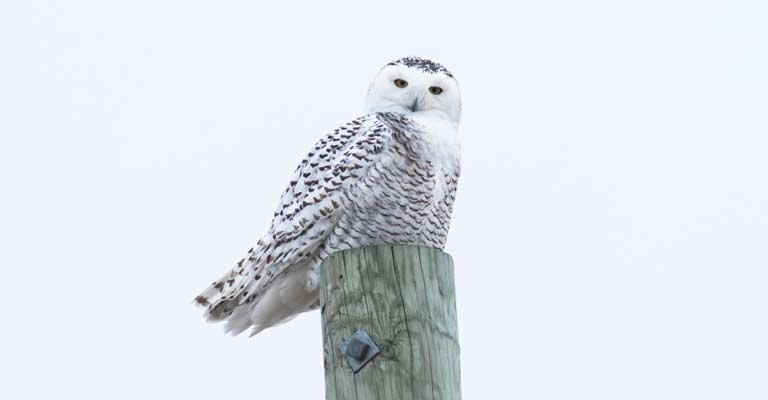
Snowy Owls exhibit a unique breeding behavior, with pairs forming in the Arctic during the summer months.
Females construct nests on the ground, typically on elevated sites like rocks or mounds, using a combination of moss, lichens, and feathers.
After a relatively short incubation period, chicks hatch, and both parents actively participate in caring for the offspring.
The Arctic summer’s continuous daylight allows for extended hunting hours to meet the demands of feeding the growing chicks.
Diseases
While Snowy Owls are relatively hardy, they can be susceptible to certain diseases and environmental stressors. Avian diseases, such as aspergillosis and avian pox, can affect individuals.
Climate change and habitat degradation also pose indirect threats by altering the availability of prey species. Monitoring health and addressing emerging diseases are crucial components of conservation efforts.
Treatment
In cases where Snowy Owls are affected by diseases or injuries, rehabilitation efforts may be undertaken by wildlife professionals.
Treatment involves a combination of veterinary care, nutritional support, and rehabilitation to ensure the birds can be released back into their natural habitat.
Timely intervention and proper care contribute significantly to their chances of survival.
Conservation
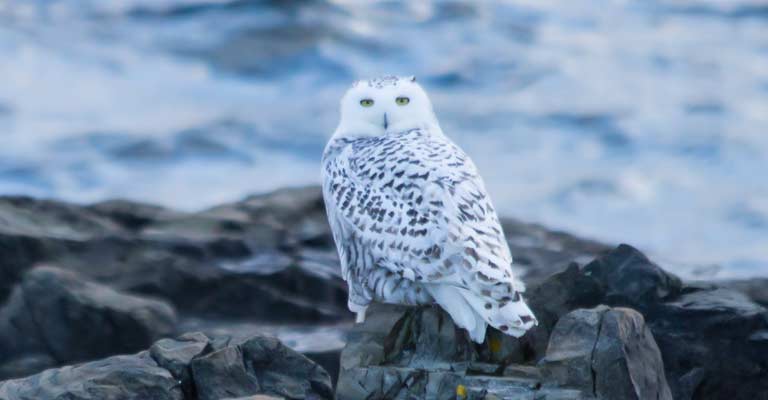
Conservation initiatives for Snowy Owls focus on preserving their Arctic breeding grounds, managing human-wildlife conflicts, and monitoring their populations during winter migrations.
Habitat protection, research on climate change impacts, and community engagement are integral to safeguarding these magnificent birds.
Conservation efforts also involve education to raise awareness about the importance of maintaining the delicate balance of Arctic ecosystems.
The Snowy Owl’s life history is a testament to its adaptability and resilience in the harsh Arctic environment.
Understanding their dietary needs, preferred habitats, breeding behaviors, potential health threats, and conservation requirements is crucial for ensuring the continued survival of this awe-inspiring species in the wild.
Nesting Habits of Snowy Owl
Nesting Details of Snowy Owl:
| Nesting Details | Facts |
| Clutch Size | 3 to 11 eggs |
| Number of Broods | Usually 1 per breeding season |
| Egg Length | Approximately 2.3 to 2.7 inches (5.8 to 6.8 cm) |
| Egg Width | About 1.9 to 2.2 inches (4.8 to 5.6 cm) |
| Incubation Period | 31 to 33 days |
| Nestling Period | 25 to 35 days |
| Egg Description | Smooth and glossy, varying in color from white to cream with brown speckles |
The Snowy Owl’s nesting details encompass a variable clutch size, typically containing 3 to 11 eggs. They generally produce a single brood per breeding season, and the incubation period lasts 31 to 33 days.
Nestlings remain under parental care for 25 to 35 days, with eggs featuring a smooth, glossy texture and a range of colors from white to cream, adorned with brown speckles.
These adaptations reflect the species’ successful reproduction strategies in the challenging Arctic environment.
Snowy Owl As a Predator
The Snowy Owl (Bubo scandiacus) is an apex predator in its Arctic habitat, exhibiting remarkable adaptations and predatory behaviors that make it a formidable hunter.
Here are some key aspects that highlight the Snowy Owl’s prowess as a predator:
Diverse Diet
Snowy Owls are opportunistic predators with a diverse diet. Their primary prey includes small mammals like lemmings and voles.
However, they are versatile hunters, capable of capturing a wide range of prey, including birds such as ptarmigans and waterfowl, as well as fish.
Powerful Talons and Beak
Equipped with strong talons and a sharp, hooked beak, Snowy Owls are well-suited for capturing and dispatching their prey.
The talons provide a secure grip, while the beak tears through the flesh of captured animals.
Excellent Vision
Snowy Owls have exceptional eyesight, adapted for diurnal hunting. Their large, yellow eyes enable them to spot prey from great distances, even in low-light conditions.
This keen vision is a crucial asset for locating prey in the vast Arctic tundra.
Silent Flight
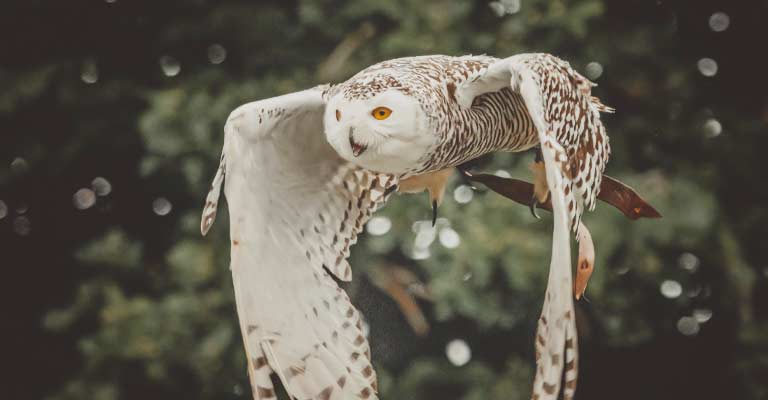
Like other owl species, Snowy Owls possess specialized feathers that muffle the sound of their flight, allowing them to approach prey silently.
This stealthy flight is advantageous when hunting small mammals or birds that might be sensitive to noise.
Territorial Behavior
Snowy Owls are territorial during the breeding season, defending their nesting sites against potential threats.
This behavior ensures a stable and secure environment for raising their young and maintaining access to abundant prey resources.
Camouflage
The snowy white plumage of Snowy Owls serves a dual purpose.
While it provides effective camouflage in the Arctic snow, helping them blend into their surroundings during the nesting season, it also aids in surprise attacks on prey by minimizing their visibility.
Long Range Migrations
Snowy Owls are known for their long-range migrations, covering vast distances to find food.
During these migrations, they showcase their adaptability by hunting in a variety of habitats, including coastal areas, grasslands, and agricultural fields, displaying their ability to thrive in diverse environments.
Parental Care
As dedicated parents, Snowy Owls invest significant effort in raising their young.
Both males and females actively participate in providing food for their offspring, ensuring their chicks receive the nourishment needed for growth and survival.
The Snowy Owl’s role as a predator is essential for maintaining ecological balance in the Arctic tundra.
10 Amazing Facts of Snowy Owl
The Snowy Owl is essential for maintaining ecological balance in the Arctic tundra.
Their adaptations, hunting techniques, and resilience in the face of harsh environmental conditions make them a fascinating and vital component of the Arctic ecosystem.
- Arctic Majesty: The Snowy Owl, with its stunning all-white plumage, represents the largest owl species, embodying the stark beauty of the Arctic tundra where it primarily resides.
- Migratory Marvel: Snowy Owls undertake remarkable long-distance migrations, covering thousands of miles in search of food. Some individuals have been known to venture as far south as the United States during winter.
- Night Vision Prowess: Renowned for their excellent night vision, Snowy Owls are primarily diurnal hunters, allowing them to take advantage of the continuous daylight in the Arctic summer for extended hunting hours.
- Versatile Diet: While lemmings and voles are stapled prey, Snowy Owls exhibit versatility in their diet, preying on a variety of birds, including waterfowl and ptarmigans, as well as fish when the opportunity arises.
- Silent Flyers: Snowy Owls are expert hunters in part due to their silent flight. Specialized feathers reduce wing noise, allowing them to approach prey stealthily without detection.
- Adaptable Camouflage: Their snowy white plumage not only provides effective camouflage in the snow but also serves as a versatile adaptation, allowing them to blend into various environments during different seasons.
- Communal Roosting: During winter, Snowy Owls may engage in communal roosting, congregating in certain areas where food is abundant. This behavior showcases a degree of social interaction not commonly associated with owls.
- Distinctive Vocalizations: Snowy Owls communicate through a variety of vocalizations. Their hooting calls, ranging from deep gutturals to softer sounds, serve purposes such as attracting mates, establishing territories, and signaling distress.
- Cold-Weather Resilience: These owls are well-adapted to extreme cold. Feathered legs and feet, along with dense plumage, provide insulation, allowing them to withstand the harsh Arctic temperatures.
- Conservation Concerns: While not currently considered globally endangered, some regional populations face threats due to habitat disturbance, climate change, and human-wildlife conflicts. Conservation efforts are crucial to ensuring the continued survival of this iconic Arctic species.
Wrapping Up
The Snowy Owl stands as a captivating symbol of Arctic resilience and predatory prowess. Its majestic all-white plumage, silent flight, and versatile hunting tactics highlight the species’ unique adaptations.
From the Arctic tundra to winter migrations, the Snowy Owl’s life history, nesting behaviors, and conservation needs underscore the delicate balance required for its survival.
Understanding and appreciating these facets contribute to not only the preservation of this iconic bird but also the broader appreciation of the intricate ecosystems it inhabits. Stay focused.